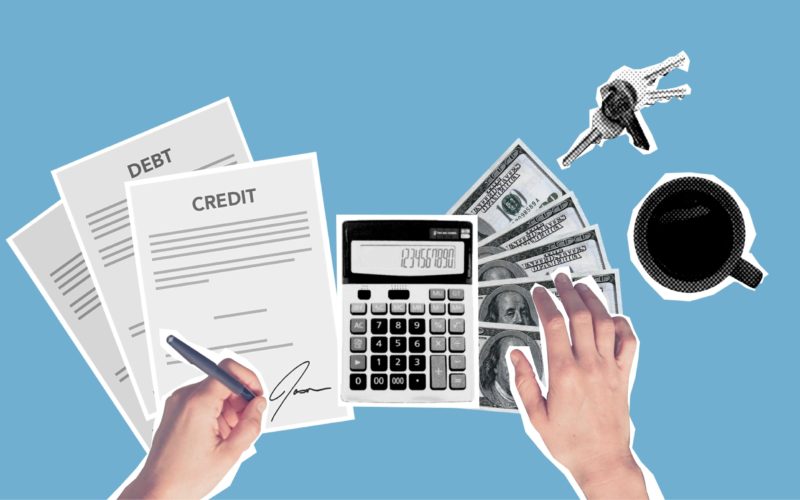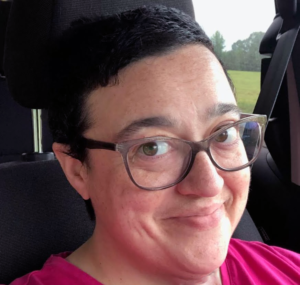Helping Adult Learners Reach the Goal of Financial Stability

by Leslie Bradner
Unexpected car repairs. Bloated cell phone bills. A big grocery haul for visiting family. These are the kinds of topics that my in-person GED® class discussed pre-COVID during breaks and after class. Even now, the stressors of working extra shifts or losing work or quitting a job to care for kids leach into my online classes and correspondence.
This is not surprising. Most students enrolled in GED® courses are there to improve their job prospects. More specifically, they want to make more money. People who do not have a GED® or high school diploma make less and have significantly higher rates of unemployment than those who do (Learn more, earn more, 2020).
When I attended Dr. Cheryl Ayers’ “Economic Empowerment Citizen Seminar” original curriculum training program at the Virginia Adult Learning Resource Center, my focus was on the economic concerns of my students. When I left, I brought with me a valuable set of resources that I have been able to integrate throughout our GED® content areas and soft skills training for real-world contexts.
The highly flexible and multidisciplinary Economic Empowerment Curriculum is divided into three parts: economics, personal finance, and entrepreneurship. It is already organized into a PowerPoint that you can edit as needed. The section on economics covers the economics topics needed for the GED® Social Studies exam. Everything. It teaches concepts such as scarcity, opportunity cost, and goods versus services. We learn about types of resources and how money flows through our economy. The curriculum also integrates basic economic reasoning skills (e.g., cost-benefit analysis) throughout personal finance and intra/entrepreneurship topics for more informed and empowered decision-making. There never seems to be enough time to plan, so I have copied that section into its own PowerPoint document and included GED®-style questions at the end for practice.
Personal finance is a large section and it can be easily subdivided into multiple lessons. It readily lends itself to the incorporation of math skills. Budgeting tasks teach not just budgeting, but integers and estimation. Decision-making exercises also demonstrate complex percentage concepts. Financial goal setting teaches rates to determine how much money must be set aside to accomplish a goal by a certain date. Simple interest is part of the lessons, so I was able to teach that without needing to develop new material. There are multiple worksheets already formatted for printing included with the curriculum which is also a time-saver.
The final section on entrepreneurship is where I could really see my students begin to imagine a way to financial stability. This inspired them to utilize many skills buoyed by a personal connection to the material because they were creating the material. This is where they showed proficiency with inference and causation to identify needs in their community. They used PowerPoint, most for the first time, to create flyers for imagined businesses. Even my most computer-phobic students had fun with fonts and graphics as they explored this new tool while developing computer literacy skills. These students were excited to not only learn, but also to look toward the future with optimism. As a teacher, I live for those moments.
Since first attending Dr. Ayers’ curriculum training program, I have used the Economic Empowerment Curriculum in part and in whole, in person and online. I will soon begin teaching a 10-week, online Personal Finance class open to our region 13 and 14 adult students and our community. And yes, I am incorporating resources from the Economic Empowerment Curriculum. Most of students’ goals for themselves include financial stability. That means that teaching them how to get there is a goal for me. If I can include material for multiple GED® subjects at the same time, they are going to reach that brighter future even faster.
The in-person Economic Empowerment Curriculum and training program is currently being recreated into an online mini-course with self-paced modules, Google Docs worksheets, and live Zoom classes to facilitate peer learning and WIOA collaboration. Details to be announced soon.
Economics and Personal Finance resource recommendations from Dr. Cheryl Ayers, founder of the Economic Empowerment Citizen Seminar.
- Next Gen Personal Finance Resources
- MRU Teaching Resources
- Virginia Council on Economic Education Economics & Personal Finance Curriculum
- Economic Empowerment Activity Sheets
Reference
Learn more, earn more: Education leads to higher wages, lower unemployment. (2020, May). Career Outlook, U.S. Bureau of Labor Statistics. https://www.bls.gov/careeroutlook/2020/data-on-display/education-pays.htm
 Leslie Bradner has worked for the region 13 adult education program since 2017 and has learned much from the experienced, long-serving teachers. In 2019, she began a full-time instructor position with Southside Virginia Community College (SVCC) teaching both adult education and psychology classes for the college. A career highlight for her was being a small part of the team who began teaching online adult education classes for regions 13/14 a mere eight days after the COVID-19 shutdown.
Leslie Bradner has worked for the region 13 adult education program since 2017 and has learned much from the experienced, long-serving teachers. In 2019, she began a full-time instructor position with Southside Virginia Community College (SVCC) teaching both adult education and psychology classes for the college. A career highlight for her was being a small part of the team who began teaching online adult education classes for regions 13/14 a mere eight days after the COVID-19 shutdown.